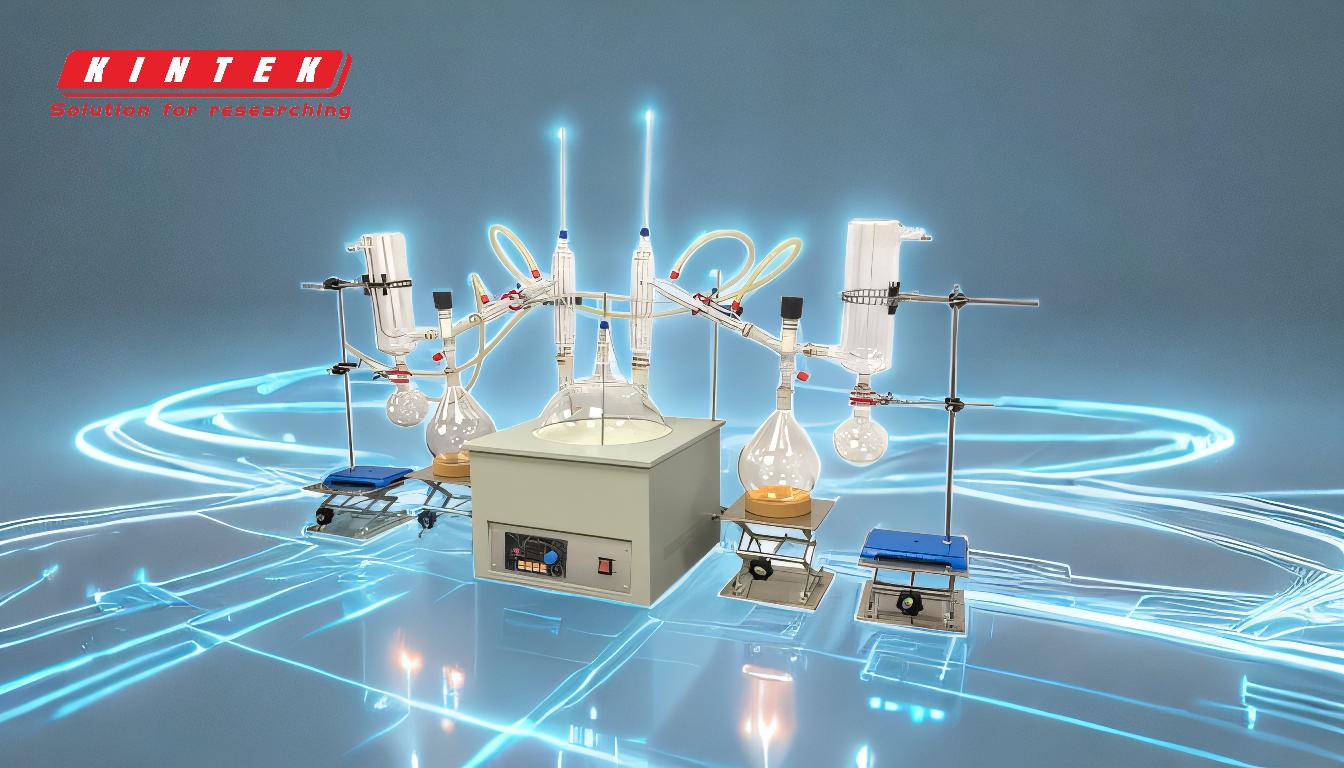Distillation systems maximize the purity of products by leveraging differences in the volatility of components within a mixture. This is achieved through controlled heating, condensation, and separation processes. Key factors such as temperature control, vacuum levels, and feed rates are meticulously managed to ensure consistent separation efficiency. The process involves heating the mixture to vaporize the more volatile components, which are then condensed and collected as purified distillate. Advanced techniques like thin film technology further enhance efficiency by increasing the surface area for evaporation, ensuring quicker and more effective removal of impurities. The result is a highly purified product, free from unwanted contaminants.
Key Points Explained:

-
Principle of Volatility-Based Separation:
- Distillation relies on the differing volatility of components in a mixture. Volatility refers to the tendency of a substance to vaporize. By heating the mixture, the more volatile components vaporize first, leaving behind less volatile impurities.
- This selective vaporization and subsequent condensation allow for the separation and purification of desired substances.
-
Temperature Control:
- Precise temperature control is critical in distillation. Each component in the mixture has a specific boiling point, and maintaining the correct temperature ensures that only the desired components vaporize.
- Gradual temperature increases help in removing impurities step-by-step, ensuring that the final distillate is free from coloration or streaks.
-
Vacuum Distillation:
- Applying vacuum pressure lowers the boiling points of the components, allowing distillation to occur at lower temperatures. This is particularly useful for heat-sensitive materials, as it prevents thermal degradation.
- Vacuum distillation also enhances separation efficiency, leading to higher purity levels in the final product.
-
Condensation and Collection:
- After vaporization, the vapors are cooled and condensed back into liquid form. This condensed liquid, known as the distillate, is collected in a clean flask.
- The condensation process is carefully monitored to ensure that only the purest fractions are collected, further enhancing the purity of the final product.
-
Thin Film Technology:
- Thin film technology is an advanced technique used in distillation to increase the surface area of the liquid mixture. By spreading the oil into a thin layer, evaporation occurs more rapidly and efficiently.
- This method is particularly effective in removing volatile solvents and impurities without damaging the desired components, such as cannabinoids in cannabis distillation.
-
Consistent Feed Rate and Process Control:
- Maintaining a steady feed rate, body temperature, and vacuum level is essential for consistent separation efficiency. Fluctuations in these parameters can lead to incomplete separation or contamination of the distillate.
- Automated control systems are often used to ensure these parameters remain stable throughout the distillation process.
-
Iterative Purification:
- Distillation can be performed in multiple stages or iterations to achieve the desired level of purity. Each stage further refines the distillate by removing additional impurities.
- This iterative approach is particularly useful in industries where ultra-high purity is required, such as pharmaceuticals or specialty chemicals.
-
Monitoring and Quality Assurance:
- Continuous monitoring of the distillation process is crucial for ensuring product quality. This includes visual inspection for coloration or streaks, as well as analytical testing to verify purity levels.
- Quality assurance protocols ensure that the final product meets the required specifications and is free from contaminants.
By combining these principles and techniques, distillation systems are able to maximize the purity of the final product, making them indispensable in a wide range of applications from chemical manufacturing to food and beverage production.
Summary Table:
| Key Factor | Description |
|---|---|
| Volatility-Based Separation | Separates components based on differing boiling points for precise purification. |
| Temperature Control | Ensures only desired components vaporize, maintaining purity. |
| Vacuum Distillation | Lowers boiling points, ideal for heat-sensitive materials. |
| Thin Film Technology | Increases surface area for faster, more efficient evaporation. |
| Iterative Purification | Multi-stage process for ultra-high purity. |
| Quality Assurance | Continuous monitoring and testing to ensure contaminant-free results. |
Discover how distillation systems can enhance your product purity—contact us today for expert guidance!












